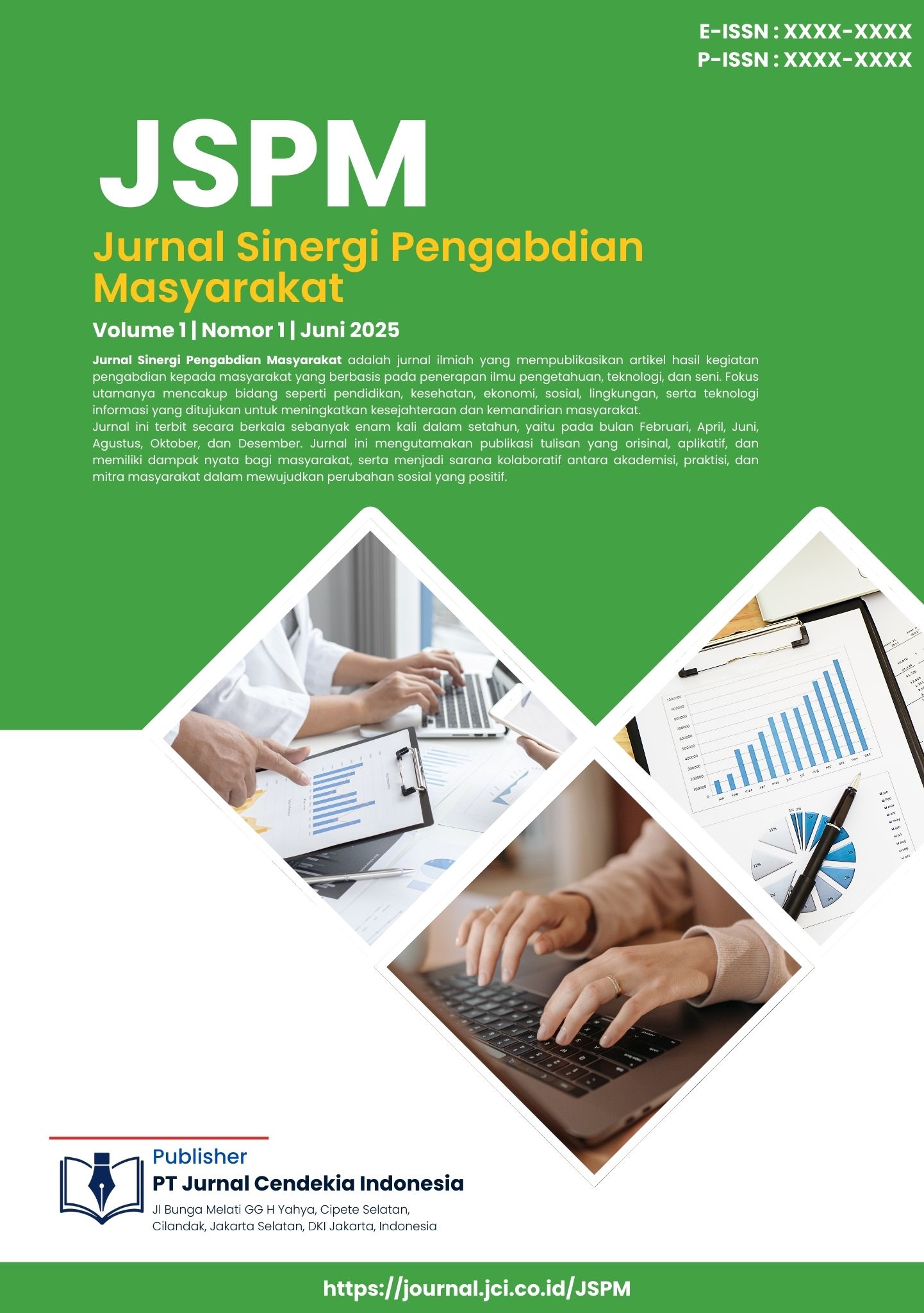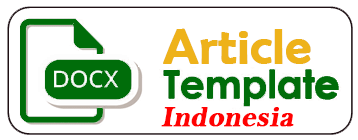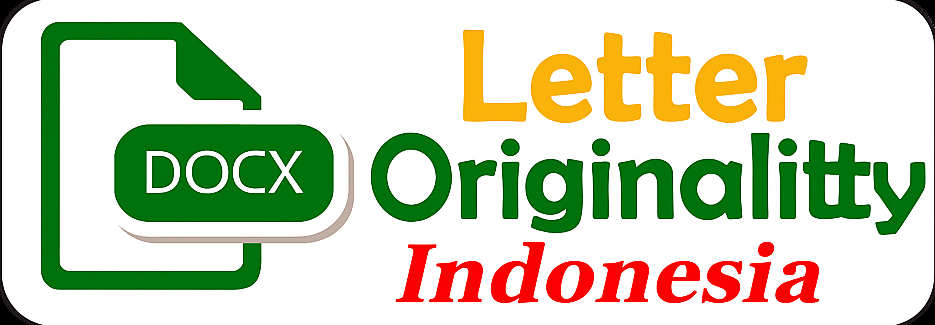Utilization of AI Technology for Innovation and Efficiency in the Digital Era by Considering the Advantages, Disadvantages, and Impacts on Students of Sebelas Maret Middle School
Keywords:
Artificial Intelligence, Educational Innovation, Digital Efficiency, Junior High School Students, Impact Of TechnologyAbstract
Artificial intelligence (AI) technology has opened many doors in the world of education, especially to improve efficiency and innovation in the teaching and learning process. The purpose of this study is to see how artificial intelligence technology is used by students of SMP Sebelas Maret. The study will explore the benefits, disadvantages, and effects produced. Educational chatbots, adaptive learning applications, and automated assessment tools are all examples of AI used to assist teachers and meet students' specific learning needs. The results of the study indicate that the main advantages of using AI lie in the ability to present customizable and interactive materials, increase the desire to learn, and increase time efficiency in learning management. However, there are some disadvantages, such as dependence on technology, students' lack of understanding of digital ethics, and the potential for reduced social interaction. Students of SMP Sebelas Maret experienced a significant impact, with improved learning outcomes and a shift towards more independent learning. To ensure that the use of AI does not cause problems or adverse effects in the long term, adequate digital literacy and mentoring are needed. In conclusion, AI has great potential to be an effective tool to support educational transformation in the digital era. However, it must be used carefully, adaptively, and contextually to meet the readiness of the educational environment. The study found that teachers need to be better trained and that policies for the use of AI in junior high schools need to be made targeted and sustainable.
References
Ahmad, M., & Pratama, R. (2022). Artificial Intelligence in Education: Opportunities and Challenges in Indonesia’s Digital Era. Jurnal Teknologi Pendidikan, 24(1), 45–55.
Alimuddin, A., & Sudirman, R. (2021). Pemanfaatan Teknologi AI dalam Pembelajaran Digital untuk Siswa Sekolah Menengah. Jurnal Informatika Edukasi, 9(2), 78–85.
Amalia, S., & Fajar, M. (2022). Implementasi ChatGPT dalam Meningkatkan Efisiensi Belajar Siswa SMP. Jurnal Inovasi Digital Pendidikan, 6(1), 12–20.
Basuki, A., & Nugroho, H. (2023). Etika Pemanfaatan Kecerdasan Buatan di Kalangan Pelajar. Jurnal Etika Teknologi, 5(2), 33–41.
Choudhury, S., & Nayak, S. (2022). Artificial Intelligence in Schools: A Critical Review of Benefits and Limitations. International Journal of Educational Technology, 14(3), 88–96.
Dewi, K. A., & Gunawan, Y. (2021). Integrasi AI dalam Pembelajaran Berbasis TIK di Sekolah Menengah. Jurnal Teknologi Pendidikan Digital, 11(3), 101–110.
Fitriani, R., & Putra, D. (2023). Kecerdasan Buatan Sebagai Alat Bantu Guru dan Siswa dalam Proses Pembelajaran Online. Jurnal Pendidikan Cerdas Digital, 8(1), 67–75.
Hanum, N. S., & Maulana, R. (2021). Pemanfaatan Aplikasi AI untuk Pembelajaran Mandiri di Era Pandemi. Jurnal Teknologi dan Pembelajaran, 13(2), 44–53.
Iskandar, A., & Hakim, L. (2022). Pemanfaatan AI dalam Dunia Pendidikan: Perspektif Guru dan Siswa. Jurnal Teknologi dan Inovasi Pendidikan, 7(1), 25–32.
Izzah, N. L., & Ramadhan, F. (2023). Potensi dan Tantangan AI untuk Meningkatkan Kreativitas Pelajar Sekolah Menengah Pertama. Jurnal Edukasi Digital, 10(2), 88–96.
Komariah, T., & Aziz, M. (2022). AI sebagai Pendukung Literasi Digital di Kalangan Siswa SMP. Jurnal Ilmiah Teknologi Informasi, 14(1), 55–63.
Kusuma, A., & Widodo, B. (2021). Pemanfaatan AI dalam Pembelajaran Interaktif: Studi Kasus Sekolah di Bogor. Jurnal Pendidikan dan Teknologi Informasi, 5(2), 73–82.
Marlina, Y., & Hidayat, D. (2023). Implementasi Teknologi AI untuk Efisiensi Tugas Akademik Siswa. Jurnal Pendidikan Inovatif, 12(1), 49–58.
Nugraha, A. T., & Sari, D. (2021). Penerapan Kecerdasan Buatan dalam Dunia Pendidikan Dasar. Jurnal Inovasi Pembelajaran Berbasis Teknologi, 9(3), 99–107.
Putri, L. A., & Prasetyo, H. (2022). AI dalam Pendidikan: Studi Komparatif Penggunaan Grammarly dan ChatGPT. Jurnal Digital Learning, 6(2), 63–70.
Rahman, T., & Santoso, B. (2021). Peran AI dalam Meningkatkan Efektivitas Pembelajaran di Sekolah Menengah. Jurnal Teknologi dan Pendidikan, 8(1), 33–40.
Ramli, S., & Yuliani, F. (2023). Pengaruh Penggunaan AI terhadap Minat Belajar Siswa SMP. Jurnal Pendidikan Digital Masa Depan, 4(1), 76–85.
Salsabila, M., & Firdaus, I. (2022). Pemanfaatan Google Lens sebagai Media Pembelajaran Visual Berbasis AI. Jurnal Teknologi Pendidikan Interaktif, 7(2), 57–64.
Syamsuddin, F., & Hartono, A. (2023). Etika Digital dan Pemanfaatan AI oleh Remaja: Studi pada Siswa SMP di Jawa Barat. Jurnal Ilmu Sosial dan Teknologi, 5(1), 88–95.
Wulandari, N., & Setiawan, A. (2022). Literasi AI: Kesiapan Siswa Menghadapi Era Teknologi Cerdas di Sekolah. Jurnal Pendidikan Inklusif Digital, 3(2), 42–51.
Downloads
Published
Issue
Section
License
Copyright (c) 2025 Kaila Nazuwa, Adis Tiani, Helmayana, Intan Pramesta Nurhayati, Yuriana Sari Harahap (Author)

This work is licensed under a Creative Commons Attribution 4.0 International License.
License: Creative Commons Attribution 4.0 International (CC BY 4.0).















 This work is licensed under a
This work is licensed under a 